Guitar Body Woods
The best wood for guitar body construction has several characteristics in common.
First, they all fall under the category of tonewood. Tonewood refers to wood species with tonal properties that make them ideal for stringed instrument or woodwind instrument building.
Next, the premier tonewoods have resonance. Resonance is a deep, whole, reverberating tone, associated with wood acoustics. The typical example of mechanical resonance is a person sitting on a swing. The swing is in oscillating motion. A slow starting motion extends to a wider arc as the in-sync momentum resonates.
Finally, excellent guitar body woods possess unique. often pronounced, grain structure. With wood grain, more pronounced wood grain generally looks rustic and aggressive. A great example of this is Ash grain.
However, woods like maple. basswood and Ayous have a much slighter delicate grain. These tonewoods project a subtle more modern appearance.
Warmoth Custom Guitar & Bass Parts has one of the largest online custom guitar building sites. They offer 24 standard guitar body woods. However, there are endless tonewood options. Additionally, there are no set rules regarding building guitars.
However, based on my hardwood lumber experience, I can tell you which 5 guitar body woods are best for electric guitar body construction.
Which Lumber Professional Rates the Guitar Woods Best?
This lumber industry veteran is the former President of the Los Angeles Hardwood Lumberman’s Club. He rates and grades guitar woods and hardwoods on a regular basis.
Although Steve is not a guitar builder, he knows hardwoods! Working with luthiers and guitar builders all over the world gives him a unique perspective. He knows the desirable qualities of guitar tonewood.
Accordingly, here are the Top 5 Best Woods for guitar bodies, as selected by a hardwood lumber professional.
#1 Best Wood for Guitar Bodies: Swamp Ash
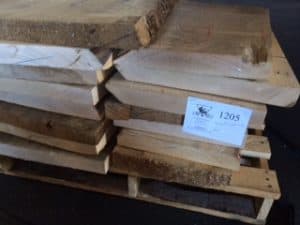
Despite Fender’s recent attempt to reduce its reliance on Swamp Ash, punky ash is still the king of electric guitar body woods. The industry consensus is that Leo Fender originally used Swamp Ash out of convenience. Basically, it was probably sitting around the shop when he made the prototypes. However, since that time, it has become synonymous with the Stratocaster, Telecaster and a myriad of other Fender-style electric guitars.
In 2021, punky ash has supply issues related to limited logging conditions as well as a frontal assault by the Emerald Ash borer. However, the decades of branding that Fender did cannot be undone anytime soon.
Swamp Ash is truly the #1 guitar body tonewood. It remains so for the foreseeable future..
#2 Best Wood for Guitar Bodies: Alder
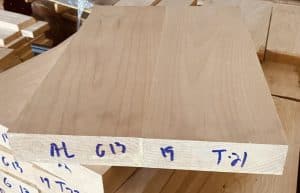
Alder, a Pacific Coast hardwood comes in a close second to Ash as a guitar body wood. While alder lacks the exciting open grain of ash, it machines very well. Additionally, it is probably the most versatile wood for luthiery. It can be stained to look like maple, cherry, walnut or box elder. A quick look at the electric guitar offerings on Sweetwater or Sam Ash shows how popular alder really is. Also, it paints just as well as it stains. Thus, luthiers tend to stock alder wood or guitar body blanks with confidence. Regardless of whether they know if upcoming jobs are paint grade or stain grade. Thus, it can reduce wood inventory holding costs.
#3 Best Wood for Guitar Bodies: Genuine Mahogany
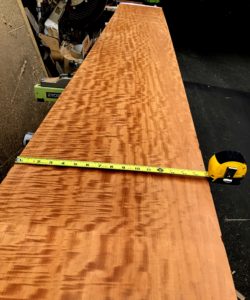
Genuine Mahogany or Honduras Mahogany is our #3 choice for best guitar body wood. First, it is just as closely associated with Gibson Les Paul as Swamp Ash is with the Fender Stratocaster. However, it is an expensive wood and not without controversy. Regardless of these factors, it machines like no other guitar wood. Accordingly, South American Mahogany earns a spot on this list at #3.
#4 Best Wood for Guitar Bodies: Limba Wood (Black or White)
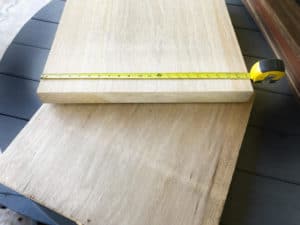

Limba or Korina wood is our #4 pick for best guitar body tonewood. Typically, Korina refers to White Limba, rather than Black Limba. However, I have seen both Black & White Limba called Korina. Of note, both are the same species of wood (terminalia superba). The only difference is how it is selected for color.
While not extremely common in the United States, Limba shares many of the same woodworking and tonal properties as Mahogany. Unfortunately, it also shares mahogany’s price point. Additionally, it is not the easiest wood to kiln dry which makes White Limba prone to stain. However, this African hardwood, when well manufactured, makes excellent guitar bodies.
Also, Korina is closely associated with vintage Gibson Explorers and Flying V guitars. Korina is a proprietary name given by Gibson Guitars for Limba. Specifically, it was done to help market & promote this wood to tie into its theme of new/exotic guitar shapes in the 1950’s – Explorer, Flying V, Firebird, Reverse Firebird, etc.
#5 Best Wood for Guitar Bodies: Obeche
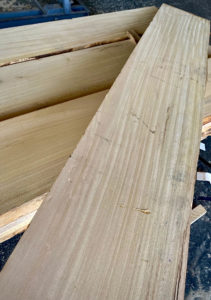
Obeche lumber is the #5 best wood for electric guitar bodies. Obeche (or Ayous) may seem like an odd choice based on its limited commercial availability in the United States, at least. However, it low density and excellent carve-ability make it a stellar hardwood for light weight guitars.
It is a soft hardwood, similar to basswood. Unlike basswood, obeche, displays beautiful chatoyance and ribbon when quartersawn.
Guitar Builders like Paul Reed Smith use it for custom shop builds.


Pingback: CHATOYANCY - What Is Chatoyance In Figured Wood?
Pingback: Is Woodworking Easy? 2023 - Commercial Forest Products